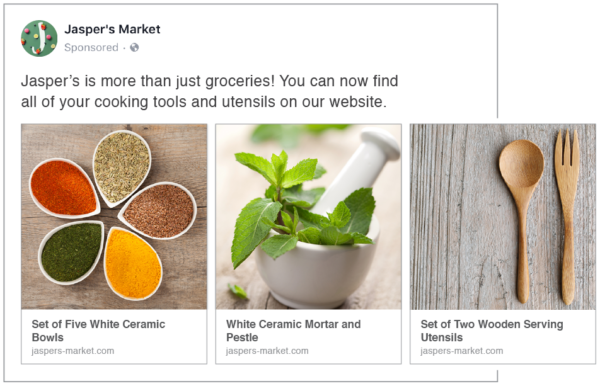Sales Orders Bing Feed Creation Error
Having your feeds set up and running, only to find out your Facebook Dynamic Product Ads aren't showing can really set you back. What's even worse is not knowing, until pulling out your performance metrics to present in your company meeting. Not a good look.
It's important to act quickly, but there's no point doing so, without some direction. We're experts in optimising product data feeds on Facebook and across other channels including Google Shopping, Bing and more. That's why we've put together the most common feed errors we've seen our clients make in Facebook Dynamic Ads and how to solve them effectively to help you get the great results you deserve.
Your Product Data Feed Powers Your Facebook Dynamic Ads
You probably chose Facebook Dynamic Product Ads because you were looking for a method of using individual customer behaviour to create tailored and targeted experiences in an automated way. It's a great retargeting strategy and helps to lead shoppers, who were deep into their shopping journey, to complete a purchase.
Just like Google Shopping, Facebook Dynamic Ads sources all its product information from its product data feed; typically, an .xml, .txt, or excel file with all your product information. Before mapping your product data into your Facebook Catalog, you need to optimise and prepare your source feed first. If you haven't already, you need to:
1. Gather and organise your source data
2. Amend & adapt your data to meet Facebook's requirements
3. Optimise your data to meet greater Facebook campaign success
4. Upload to Facebook and continually refresh your data
It can be time-consuming preparing your product data feed for each channel but it's a mandatory activity if you want your data feeds up to scratch to fully support your digital promotion.
If are not 100% sure why managing your data feeds properly is so important, we've wrapped up the benefits of good data feed management.
The Common Facebook Dynamic Feed Errors
Once you've got your Product Catalog organised and going out, and notice your Dynamic Ads are performing poorly, the problem is likely to come down to your data feed.
Missing Attributes
Without the required attributes, your Dynamic Product Ads won't show up at all. It's crucial that you have the most important fields in the feed that meets the requirements. For each channel, there tends to be a basic list of attributes. For Facebook's Product Catalog you need to ensure you have:
- ID
- Title
- Description
- Image_link
- URL link
- Price
- GTIN, MPN or Brand
- Availability
- Condition
With your complete, accurate and organised product data, take time to ensure the fields are mapped correctly into your Facebook Product Catalog.
Your Values aren't Right
Once the attributes are properly mapped, you need to ensure the values they contain are correct. Your values are the building blocks of your product data feed. It is crucial to provide complete and accurate information in the correct format, otherwise, your Dynamic Product Ads are likely to get rejected. By taking time to regularly maintain your feeds, it becomes an easy process to ensure you provide valid data.
Your IDs are Invalid
This can be a messy business. Your Product ID helps to not only match the product in your data feed but it's also identified by your Facebook Pixel on the product page. If it doesn't match, it'll be flagged as an incorrect or missing product.
The common problem merchants have is identifying which ID from their feed reflects the ID they fire on their site, into the Facebook pixel. This changes per merchant with some clients choosing to fire the variant ID into the pixel and others the parent. The feed needs to always reflect the ID the site fires into the pixel to avoid low match rates.
Consider asking yourself whether you want to use all variant IDs or parent IDs only in your feed. It all really depends on what works best for you, but it can make it a lot easier to use parent IDs only. It means providing fewer products which costs less and is easier to maintain when ensuring that information is correct and validated.
Your Google Categories are Missing
You read that right. Facebook actually uses Google's taxonomy for categorising items.
In Google Shopping, the Google Category is a fixed taxonomy structure that ensures your PLAs show up in the relevant product searches. Facebook uses the same taxonomy structure as a standard for its Dynamic Ads. So, if you're already using Google Shopping this should be something you'll be familiar with.
Note: Google changes categories once a year, yet they allow you to continue listing in old categories for a period of time before flagging issues. Facebook on the other hand always stick to the latest google taxonomy so old categories will get removed immediately and flagged - so it's important to stay on top of it.
You Forgot About Currency
Although Google accepts feeds with or without the price currency, Facebook prompts you to add this in. Within the Facebook platform, it's important to choose the target country/currency the prices are in. Alternatively, you can set the currency alongside the prices in the feed.
Images are Pixelated
You only get one chance to make a good first impression. A small image size won't get your products disqualified, but it can affect performance and can make your ad look unappealing. It won't get the clicks and conversions.

For Facebook, the recommended image resolution is 600x600 pixels. Anything lower can appear poor quality. It's also recommended to use lifestyle photos to really capture attention. After all, there'll be a carousel of images so audiences will want to see ads that are aesthetically pleasing.
Solution Provider
Once you understand the importance of your product data feed, you'll have a better understanding of the errors you may have and how it's affecting you. This way you can solve these quickly and can avoid it from happening again in the future.
It can be difficult for internal teams to manually optimising your product data feeds per channel. Our powerful data feed management platform helps optimise your product data feeds at scale, across 1500 channels and marketplaces.
If you want to know more about product data quality, have a read of our e-book on Product Data Quality.

Source: https://www.intelligentreach.com/blog/facebook-dynamic-ads-6-common-feed-errors-how-to-fix-them/
Post a Comment for "Sales Orders Bing Feed Creation Error"